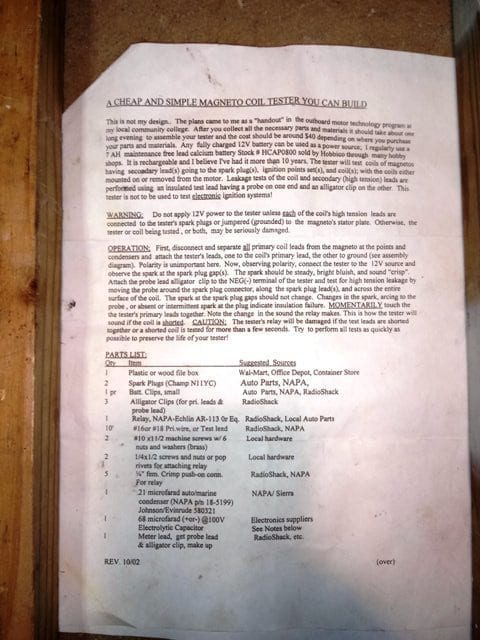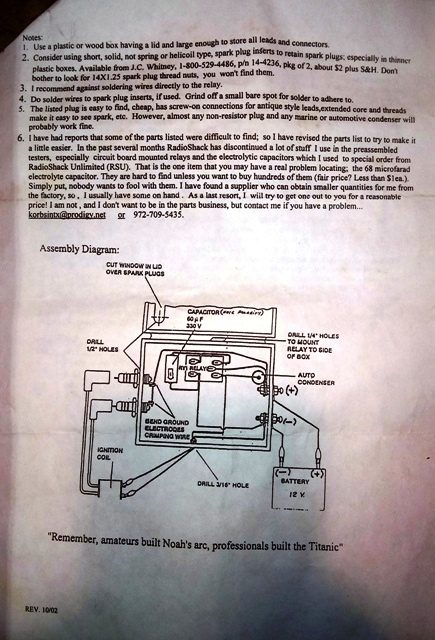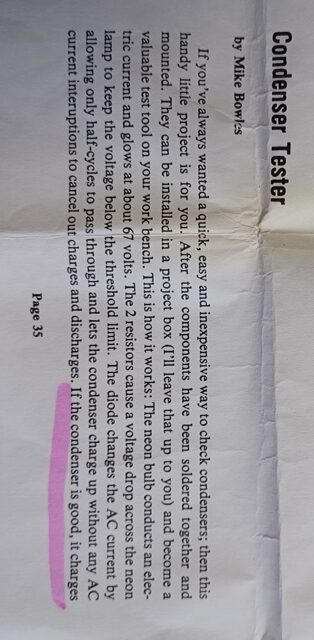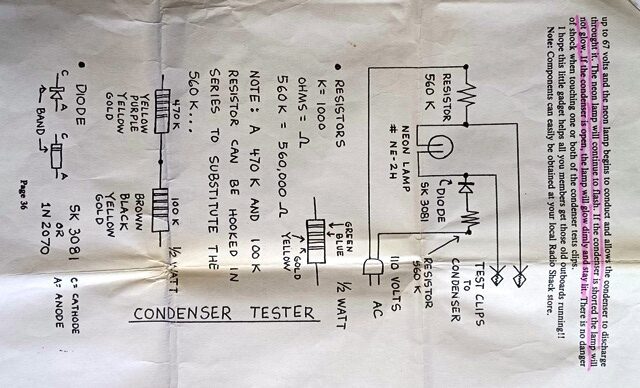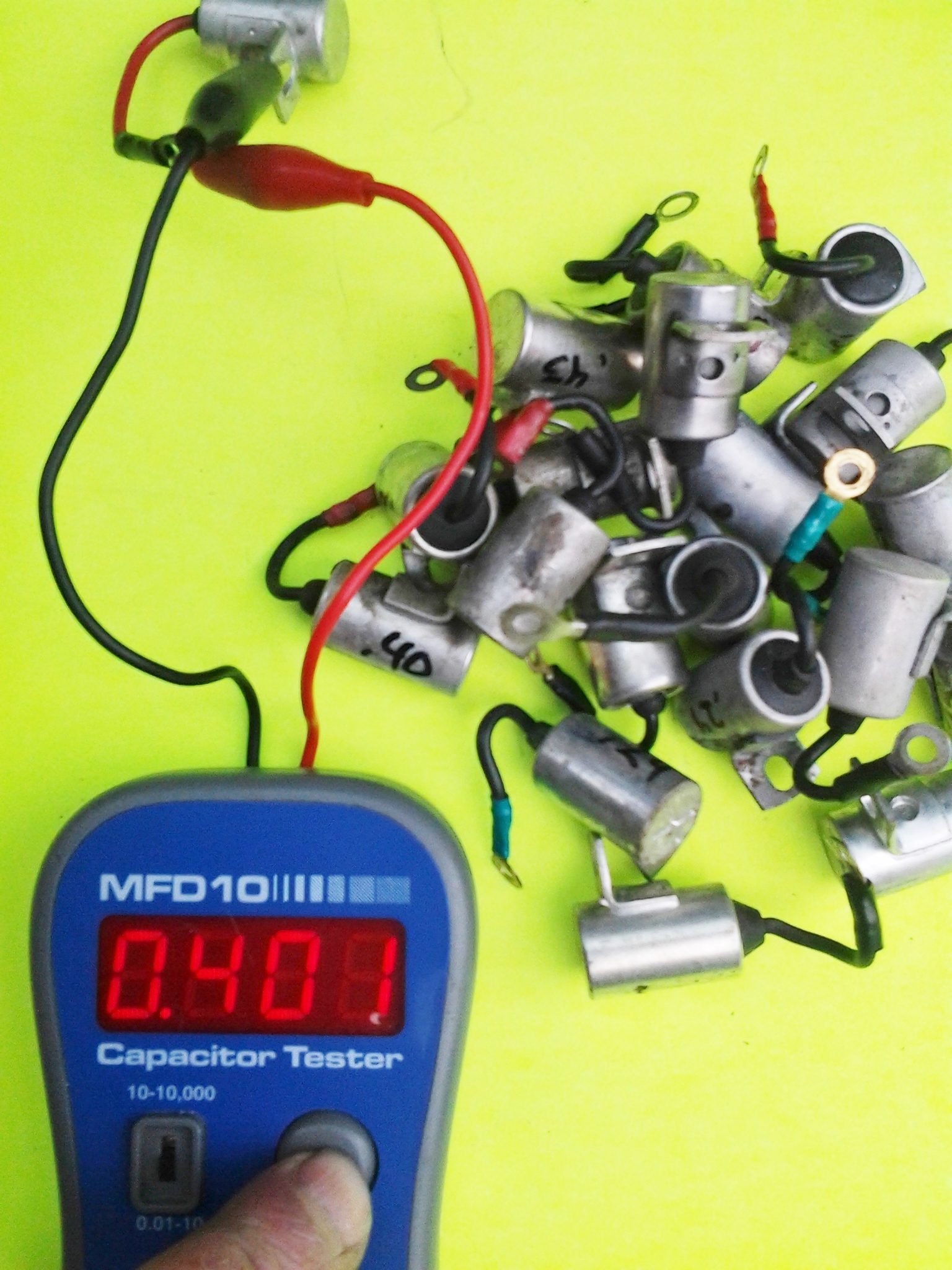Home › Forum › Ask A Member › home made coil and condensor testers
- This topic has 7 replies, 5 voices, and was last updated 2 years, 4 months ago by
crosbyman.
-
AuthorPosts
-
March 17, 2023 at 11:05 am #274042March 17, 2023 at 11:07 am #274045March 20, 2023 at 4:31 pm #274203March 20, 2023 at 11:52 pm #274234
I have one of these condenser testers. I think that mine was commercially made, but the circuit is as shown in ‘outboardnut’s” post. It is reliable, gives a good indication of condition. The neon light tells the story…. No blink – bad condenser. The rate of blink is directly proportional to the capacitance… not scientific, but by comparing the blink rate to a known value cap, you can pretty much match an unknown. The voltage stress level is only about 67 volts, so a cap that tests good might in fact fail under actual use in a magneto, but so far the tester has proven reliable.
Joe B
March 21, 2023 at 9:37 am #274246Looks good to me- But like I said -it was built for me
March 21, 2023 at 9:44 am #274247Microsoft Word – Part2_Condenser_Testers_And_Testing_Correctly.doc (wrcoutboards.org)
Joining AOMCI has priviledges 🙂
March 21, 2023 at 1:23 pm #274256If I’m not mistaken, this tester only tells you if the cap is good or bad, working or not. What it doesn’t tell you is the uF rating of the cap, which is very important to.
I’ve found that the uF readings of caps used in our magnetos tends to rise with age while the uF readings of electrolytic caps used in audio gear tend to fall over time. Regardless, they all have a certain lifespan and will start leaking and wandering from their original uF rating requiring replacement. Even unused old ones sitting on a shelf go bad over time.
Here’s a pile of leaky points arcers destined for the trash with about twice as much capacitance as they should have.
March 21, 2023 at 6:38 pm #274266Mumbles if your comment refers to M.Mohat’s test box…. YES it only checks leakge good or bad…. I test all caps with a capacitance meter
Joining AOMCI has priviledges 🙂
-
AuthorPosts
- You must be logged in to reply to this topic.


